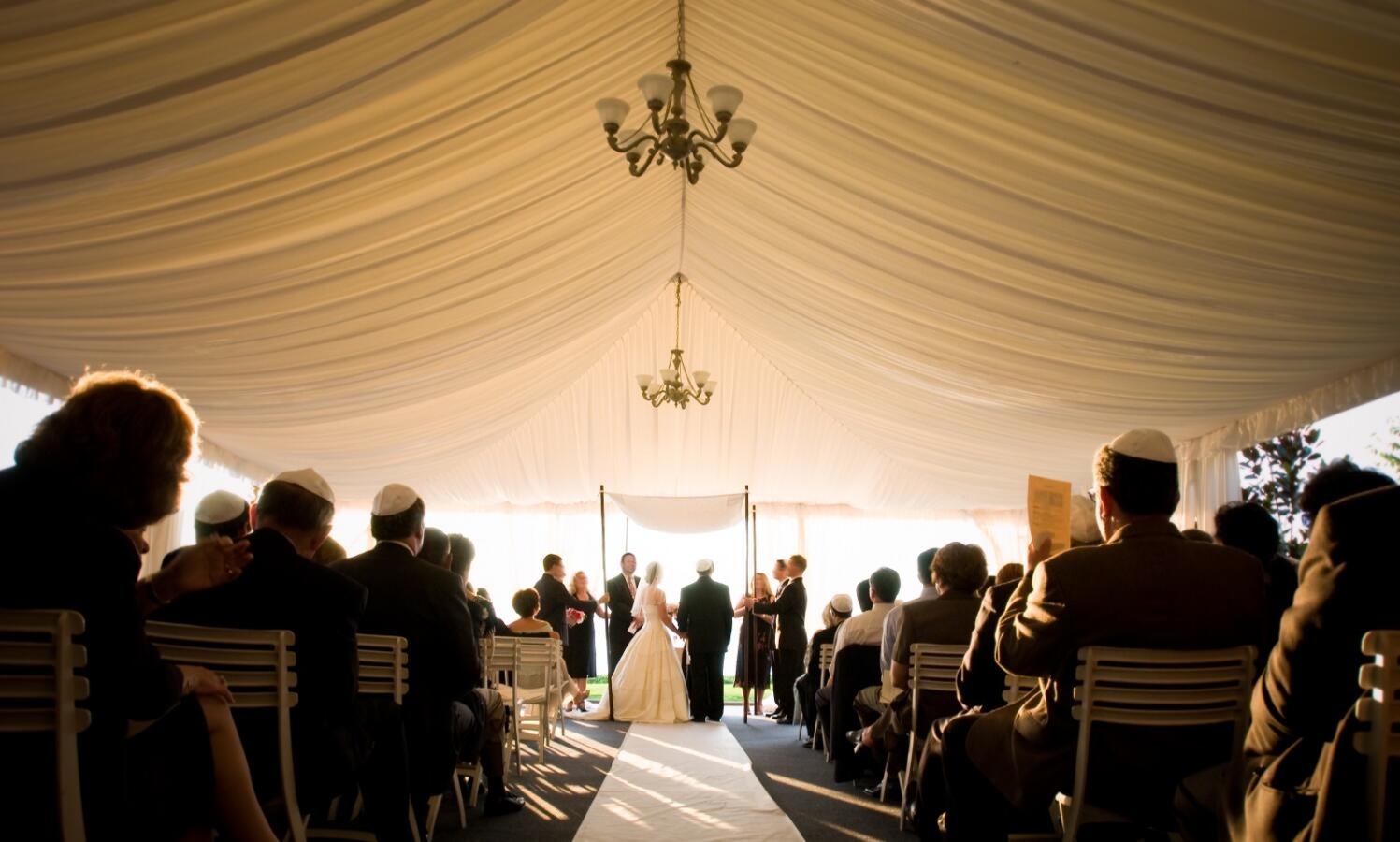Jewish marriage is integral to God‘s plan of ongoing creation, which began with the creation of the first human couple, Adam and Eve. Marriage not only provides individual companionship, but it ensures the physical and spiritual survival of humanity by creating communities that reflect divine law.
Are you planning a Jewish wedding? Let us help out! Sign up for Breaking the Glass, an email series that will help guide you to the wedding that’s right for you!
About Weddings
Modeled on a property transaction in which the groom paid the bride’s father a bride price (mohar), marriage has evolved into a more spiritual commitment. Yet even today the legal basis of traditional Jewish marriage is rooted in acquisition, with the marriage effected by the husband’s bestowal of a wedding ring and the wife’s passive acceptance. Despite the imbalance of power in the husband’s favor, however, Jewish law quickly evolved to create protections for women. The ketubah (marriage contract) obligates a husband to provide food, clothing, and sexual satisfaction to his wife. It also includes a lien to be paid by the husband to the wife in case of divorce.
Liturgy, Ritual, and Custom
The Jewish wedding is not just a one-day affair. The “wedding” rituals began with the decision to get married. A tenaim ceremony heralds the upcoming marriage by reading a document of a commitment and shattering a dish. Closer to the wedding is the aufruf, where the groom (or the couple) recites a blessing over the Torah and is showered with candy. The bride has the opportunity to prepare spiritually by immersing herself in the mikveh (ritual pool), a custom many grooms follow as well.
With your help, My Jewish Learning can provide endless opportunities for learning, connection and discovery.
On the wedding day, before the ceremony, the ketubah is signed by two witnesses, and many couples do the bedeken ceremony in which the groom covers the bride’s face with a veil.
The marriage ceremony, conducted under a huppah (marriage canopy), has two parts–the betrothal, known as erusin or kiddushin, and the actual marriage, nissuin. The ketubah is generally read between these two parts. The betrothal traditionally includes:
1) two blessings, one over wine and one reserving the couple for each other;
2) the ring ceremony;
3) and the groom’s recitation of the formula, “Behold, by this ring you are consecrated to me as my wife according to the laws of Moses and Israel.”
The nissuin ceremony involves the recitation of seven blessings, called the sheva berakhot, that reflect themes of Jewish marriage. The ceremony ends when the groom (or sometimes groom and bride together — or in a same-sex wedding, both partners) shatters a glass in memory of the Temple’s destruction.
The rituals don’t end with the recessional. The newly married couple spends a short time alone together in yihud, or seclusion, and then proceeds to the wedding feast. The sheva berakhot are repeated after dinner and optionally each night for a week at celebratory dinners with family and friends.
Contemporary Issues in Marriage
In the contemporary social climate of egalitarianism and inclusion, Jewish marriage is confronting a host of issues: whether the Jewish marriage contract and ceremony can be made more egalitarian; whether to accept same-sex marriage (given the biblical prohibition against homosexuality), something all the non-Orthodox movements now do; and whether prenuptial agreements will be effective in alleviating the plight of the agunah, a woman whose husband will not or cannot grant her a get, or Jewish bill of divorce. With the rise of intermarriages, Jewish clergy are confronted with questions around creating inclusive weddings that honor Jewish and non-Jewish faith traditions.
ketubah
Pronounced: kuh-TOO-buh, Origin: Hebrew, the Jewish wedding contract.
Torah
Pronunced: TORE-uh, Origin: Hebrew, the Five Books of Moses.
chuppah
Pronounced: KHOOP-uh or khoo-PAH, Origin: Hebrew, canopy under which a Jewish wedding ceremony takes place.



